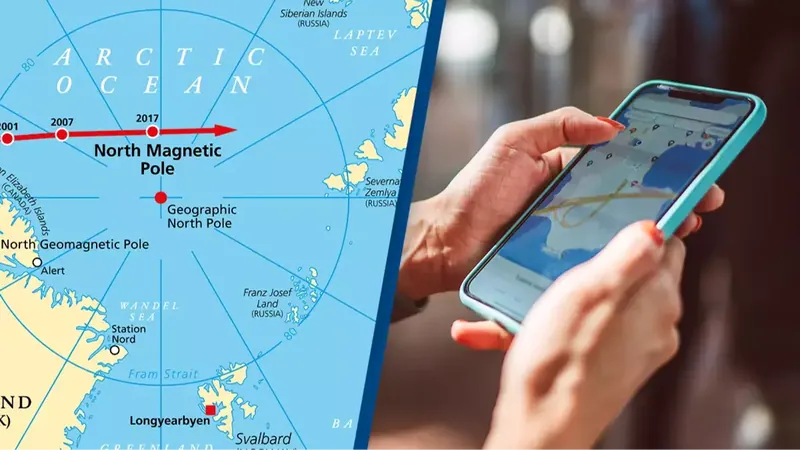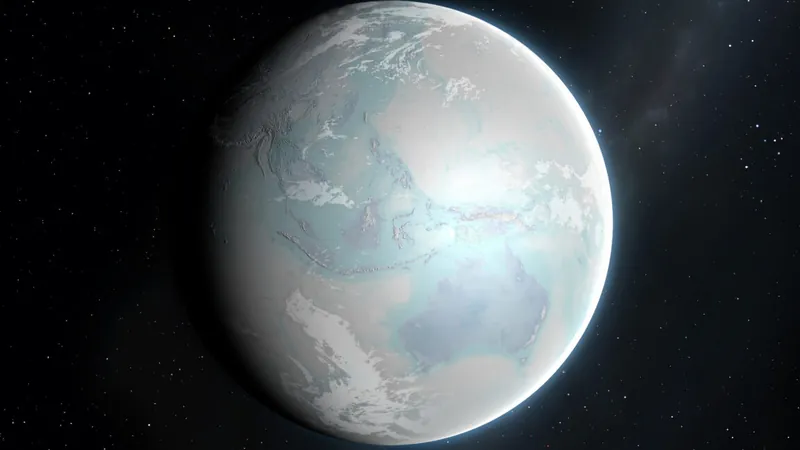
Earth's Magnetic North Pole Makes Dramatic Move: What This Means For Your Smartphone!
2024-11-17
Author: Michael
Introduction
Our planet is in the midst of an astonishing transformation as the magnetic North Pole shifts from northern Canada towards the Arctic Ocean, now steadily heading toward Russia. This movement is occurring at an unprecedented pace, raising concerns about its potential effects on navigation systems—including those in our smartphones.
Understanding Earth's Magnetic Field
At the heart of our planet lies a sea of molten iron in the outer core, which, when the Earth rotates, generates a magnetic field that governs the directional forces we rely on. Essentially, Earth behaves like a massive magnet with two poles: the north and south magnetic poles. Interestingly, a compass needle—a small magnet itself—points toward the Earth’s magnetic north, which we now know is actually closer to the geographic south.
Historical Context
As The BBC elaborates, shifts in temperature and the dynamic flow of liquid iron can change the strength of this magnetic field, compelling the poles to swap positions over geological time. To put this into perspective, scientists have documented nearly 200 magnetic pole reversals over the last 100 million years, with the last significant event occurring around 800,000 years ago.
Current Magnetic Pole Movement
Now, let's dive deeper into the remarkable and unexpected implications of the North Pole’s migration toward Russia. Dr. William Brown, a global geomagnetic field modeller at the British Geological Survey, noted that for centuries, the magnetic North Pole was fairly stable near northern Canada. However, it started to drift into the Arctic Ocean in the 1990s and is now moving roughly 25 kilometers per year—though it reached a peak drift of about 55 kilometers annually during the 2000s.
Impact on Technology
What does this mean for modern technology? The shifting magnetic field could throw navigation systems out of whack, potentially impacting how smartphones determine direction and location. As dramatic as this sounds, the World Magnetic Model—a collaborative project by the British Geological Survey and the National Oceanic and Atmospheric Administration—continuously updates to accommodate these shifts, ensuring our navigational tools remain accurate.
Conclusion
While some might humorously speculate about international politics influencing this phenomenon, experts agree that solar storms and atmospheric fluctuations are the primary contributors to these changes. For those who rely heavily on GPS and navigation applications, understanding these ongoing shifts is crucial, as failing to address them would render our devices less reliable.
So, as this remarkable natural event unfolds, stay informed and keep your devices updated—the future of your phone’s navigation might just depend on it!









 Brasil (PT)
Brasil (PT)
 Canada (EN)
Canada (EN)
 Chile (ES)
Chile (ES)
 España (ES)
España (ES)
 France (FR)
France (FR)
 Hong Kong (EN)
Hong Kong (EN)
 Italia (IT)
Italia (IT)
 日本 (JA)
日本 (JA)
 Magyarország (HU)
Magyarország (HU)
 Norge (NO)
Norge (NO)
 Polska (PL)
Polska (PL)
 Schweiz (DE)
Schweiz (DE)
 Singapore (EN)
Singapore (EN)
 Sverige (SV)
Sverige (SV)
 Suomi (FI)
Suomi (FI)
 Türkiye (TR)
Türkiye (TR)